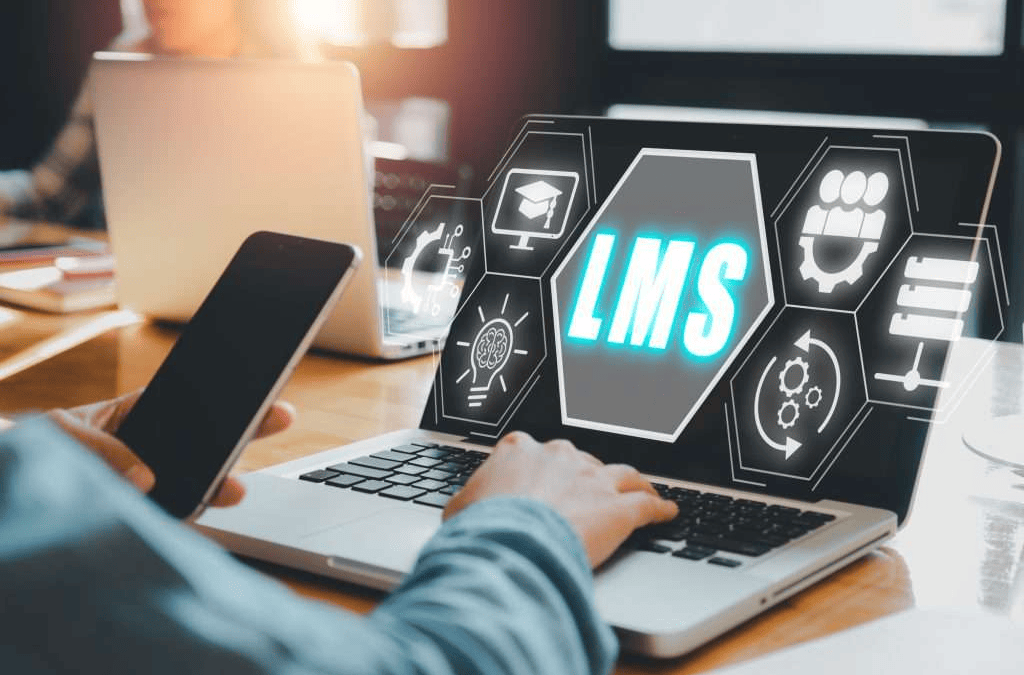A Learning Management System (LMS) is a software application or platform designed to facilitate the administration, documentation, tracking, reporting, and delivery of educational courses, training programs, or learning and development initiatives. It serves as a centralized hub for managing all aspects of learning processes within an organization or educational institution. Learning Management System have gained immense popularity in both academic and corporate settings due to their ability to streamline learning activities, enhance accessibility, and improve overall learning outcomes.
Understanding the Components of a Learning Management System
A typical Learning Management System consists of several key components, each playing a crucial role in its functionality:
- User Management: User management allows administrators to create and manage user accounts, assign roles and permissions, and organize users into groups or categories based on their roles or departments within the organization.
- Content Management: Content management enables the creation, organization, and delivery of learning materials such as courses, modules, quizzes, assignments, and multimedia resources. It allows instructors or content creators to upload, edit, and organize content efficiently.
- Course Management: Course management features enable administrators and instructors to create, schedule, and manage courses, including setting up prerequisites, enrollment periods, and access permissions. It also includes tools for tracking course progress and completion status.
- Assessment and Evaluation: Assessment and evaluation tools facilitate the creation and administration of quizzes, tests, surveys, and assignments to gauge learners’ understanding and progress. These features often include automated grading and feedback mechanisms to provide learners with immediate performance insights.
- Communication and Collaboration: Communication and collaboration tools promote interaction and engagement among learners, instructors, and administrators. These may include discussion forums, messaging systems, virtual classrooms, and collaborative workspaces to foster peer learning and support.
- Reporting and Analytics: Reporting and analytics capabilities allow administrators to track and analyze various aspects of learning activities, including user participation, course completion rates, assessment results, and learning outcomes. This data-driven insight helps in identifying areas for improvement and making informed decisions.
How Does a Learning Management System Work?
The functionality of a Learning Management System revolves around the seamless integration of its various components to create an efficient learning ecosystem. Here’s how a typical LMS works:
- User Registration and Authentication: Users, including learners, instructors, and administrators, register and authenticate themselves on the LMS platform. They provide necessary information such as usernames, passwords, and contact details to create their accounts.
- Course Creation and Management: Administrators or instructors create courses by assembling learning materials, such as text documents, videos, presentations, and assessments, into organized modules or lessons. They set up course parameters, such as enrollment deadlines, access permissions, and prerequisites.
- Enrollment and Access Control: Learners enroll in courses based on their interests, job roles, or academic requirements. Access to course content is controlled based on enrollment status and permissions set by administrators. Learners may be granted access to specific courses or modules based on their prerequisites or eligibility criteria.
- Learning Delivery and Interaction: Learners access course materials and engage in learning activities through the LMS interface. They navigate through course modules, view instructional content, participate in discussions, complete assignments, and take assessments. Communication tools facilitate interaction with instructors and peers, allowing for collaborative learning experiences.
- Assessment and Feedback: Learners complete assessments, such as quizzes, tests, or assignments, to demonstrate their understanding of the course material. Automated grading features provide instant feedback on their performance, while instructors may also offer personalized feedback to support learning progression.
- Progress Tracking and Reporting: The LMS tracks learners’ progress and performance throughout the course duration. Administrators and instructors can generate reports and analytics to monitor user engagement, course completion rates, assessment results, and other relevant metrics. This data helps in evaluating the effectiveness of learning initiatives and identifying areas for improvement.
- Continuous Improvement: Based on the insights gathered from reporting and analytics, administrators and instructors can make data-driven decisions to enhance the learning experience. They may update course content, adjust instructional strategies, or implement targeted interventions to address learners’ needs and improve learning outcomes continuously.
Conclusion
In conclusion, a Learning Management System (LMS) is a powerful tool for managing and delivering educational content and training programs in various organizational and academic settings. By integrating user management, content management, course management, assessment and evaluation, communication and collaboration, and reporting and analytics features, an LMS creates a comprehensive learning ecosystem that enhances accessibility, engagement, and effectiveness of learning initiatives. Understanding how a Learning Management System works is essential for educators, trainers, and administrators to leverage its capabilities effectively and maximize the benefits of online learning and training.


